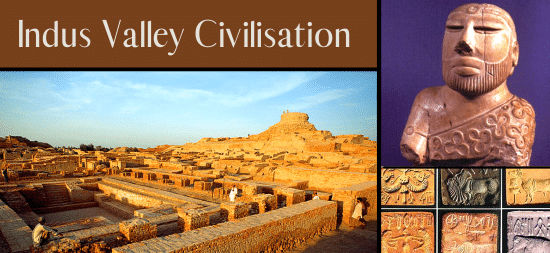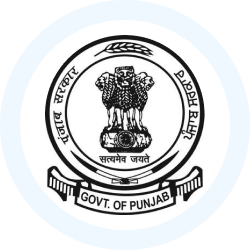Indus Valley Civilisation | Punjab State (PPSC) PSC: Preparation - PPSC PCS (Punjab) PDF Download
Indus Valley Civilization (Harappan Civilization)

The Harappan Civilization, also known as the Indus Valley Civilization, was a Bronze Age society that existed from around 2500 BC to 1750 BC. It was primarily located in the northwestern regions of South Asia, covering areas that are now part of Afghanistan, Pakistan, and northwestern India.
The urban Harappan culture was characterized by several distinctive features, including:
- Pottery made with wheels,
- Baked bricks,
- An elaborate drainage system,
- Masonry walls and tanks,
- Planned cities and towns,
- Standardized weights,
- Seals bearing a script.
The outermost sites of this civilization were found at Manda, Ropar, and Chandigarh, while the majority of urban settlements were located in the southern parts of the region and along the Himalayan foothills.
The civilization was named after the site of Harappa, which was excavated in 1921 by Daya Ram Sahni, leading to the recognition of the Harappan Civilization.
Important Sites of Indus Valley Civilization in Punjab
Rupnagar
- Excavated by YD Sharma in 1952-53, the site on the bank of the Sutlej River dates back to 2000 BC to 1500 BC.
- Harappan remains include earthenware, seals, beads, bangles, and a cemetery.
Kotla Nihang Khan
- Discovered in 1929, this proto-historic site in Rupnagar district contributes to the understanding of the Harappan period.
Dher Majra
- Located 8 km northeast of Rupnagar, this site adds to the evidence of Harappan culture in the region.
Bara
- A mound about 8 km from Rupnagar revealed late Harappan accumulations, contributing to the understanding of the civilization's timeline.
Rohira
- Excavations at this site, located about 6 km from Ahmadgarh, uncovered large houses made of bricks in a 1:2:4 ratio.
- Numerous beads, bangles, and other artifacts made of steatite, terracotta, and bone were discovered.
Sanghol
- Excavations indicate the presence of late Harappan culture, with discoveries of terracotta figurines, pottery, and copper objects similar to those found in Rupnagar and Chandigarh.
- Evidence suggests an identical culture in this area.
Sunet
- Located about 6 km from Ludhiana, Sunet was a large city in ancient times.
- Excavations revealed important seals, coins, coin-molds, and terracotta figurines of humans and animals.
In addition to the previously mentioned sites, explorations have also been conducted in other areas of Punjab, such as the Mansa and Bathinda districts. These explorations suggest that the Indus Valley Civilization thrived in Punjab during ancient times.
|
23 videos|50 docs|47 tests
|





















